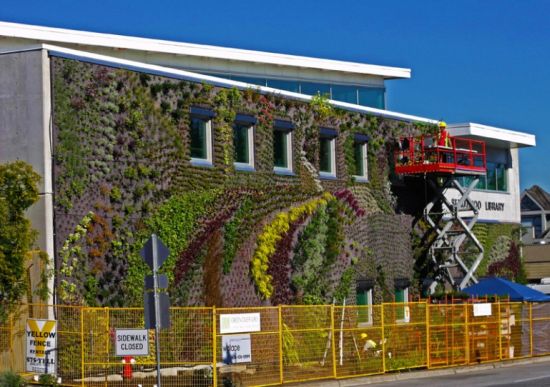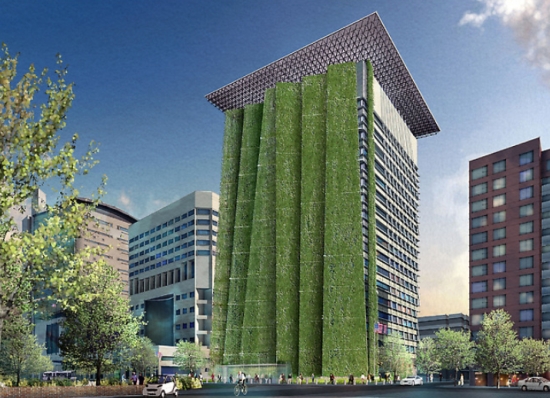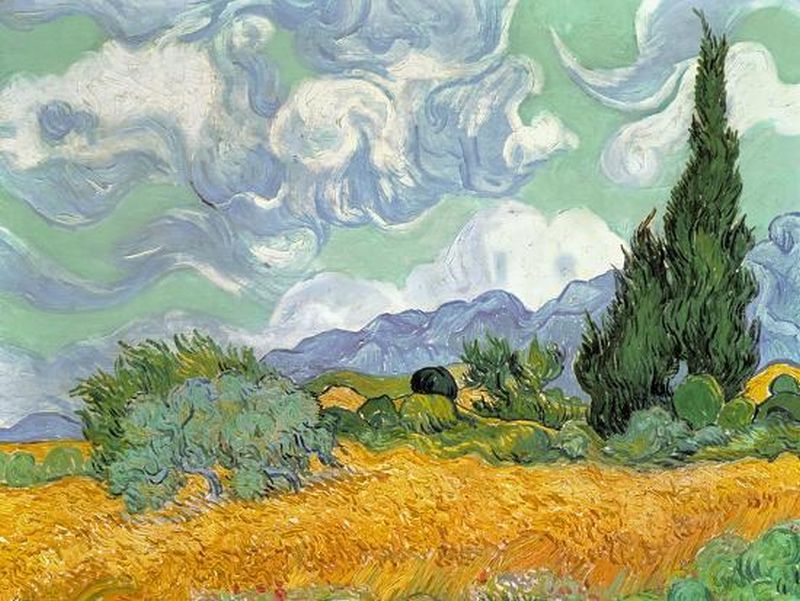In concrete jungles overcrowded by buildings, it seems no longer possible to add any green cover to the city. However, if you look at green cities from around the world, you’d find out that that’s not completely true. A slightly more expensive but space-saving alternative is still available. Why not simply plant the greenery on the wall? Simple isn’t it? Well, not quite, but Canada’s NSCC’s exterior living wall and many other locations around the world it is gaining a bit of success. A sister to the terrace and vertical gardens, if this concept becomes mainstream, then it might help in bringing down the rising city temperatures.
NSCC’s exterior living wall

Not only will the green wall (living wall), installed at Nova Scotia Community College‘s (NSCC) Center for the Built Environment, bring a shade of green to the Waterfront Campus. It will also create habitat for numerous creatures and purify the air as well. Laden with no less than a 7,000 plants, the wall will be a breathing canvas that changes with every season.

Dr. Joan McArthur-Blair, NSCC president, says…
This living wall demonstrates the capacity of the Centre for the Built Environment to help Nova Scotians study the renewable energy and green technologies that are essential to our sustainable future.

Sue Sirrs, the landscape artist, was asked to suggest a suitable green wall for the center. She finalized the “made-in-Nova Scotia solution” after testing some five planting systems from across the world.





Some more green wall examples like NSCC’s exterior living wall
1. Europe’s largest living green wall resurrected at London’s Mint Hotel

Imagine a hotel where even walls have the best of greenery around. An eco hotel is what it becomes. The Mint Hotel is the first hotel of its kind, complete with a living green wall. Guess the Great Wall of China can have stiff competition from the Green Wall of Europe. The Mint Hotel was opened to the public just a few years back. However, the most surprising part is that it’s already a major hit with the crowds. The main reason of its popularity can be given to the building’s façade of the tallest living green wall in the whole of Europe. The hotel is located near the Tower of London.
The plants have been planted with a lot of planning and precision. Adorning the walls are forty species of plants and they have been arranged in the hotel’s exposure to the sunlight. For example, ferns have been planted in shady areas by surrounding buildings. In addition, thrifts and red campion soak up light where the sun hits unobstructed.
The wall contains 184,000 single plants divided between 4,100 planting modules.
If you’re already packing your bags and ready to head into this luscious green hotel, then just a good to know the piece of information for you. The rooms are affordable at $200/night while you can also be connected with your family and friends through the WiFi. Of course, enjoying the scintillating view is a part of the package.
2. North America’s largest living wall

Canadian designers Green Over Grey have recently given North America its largest and most biologically diverse living wall. The 3,000 square feet alluring green wall at the Semiahmoo Public Library and Royal Canadian Mounted Police Facility in Surrey, British Columbia includes over 10,000 individual plants. The self-sufficient hydroponic vertical garden is wrapped around a frame featuring waterproof panels. These are attached to a wall at a fixed distance, allowing air circulation and no damage to the building.
The lights and automatic irrigation system fixed onto the frame produces healthy, green plants. The unique design combined with a variety of plants adds to the aesthetics. Seeking LEED certification, the living wall offers natural insulation, rain-screening and air purifying benefits to the building. The plants employed to do the air purification act. Furthermore, efficient air-purifiers also contribute in their own little way.
The wall exhibits an interestingly unique design, thanks to the large perennials, shrubs and small trees from 120 unique species. Apart from providing a healthy living environment for the employees and visitors, the Green Over Grey living wall is also expected to reduce electricity bills in winter by up to 20 percent and reduce temperatures in summer by as much as 7°C.
3. Portland plans to save energy with a 200-ft high green wall

The federal building in Portland, Oregon will soon be seen energy-efficient and eco-friendly renovation. As part of a $133 million renovation, the General Services Administration is planning a green wall. From top to bottom, the western façade of the structure will have vegetated fins that will grow more than 200 feet high. The wall made from living, breathing vegetation will be seasonal, providing cooling shade in spring and summers and during winters the wall with thin, letting light in.
The city officials claim that it is capable of saving nearly $280,000 in energy costs annually. The building will also see the installation of solar panels that will bring down the energy consumption by some 60-65% as compared to a similar-sized office. Moreover, the architects are yet to deal with irrigation issues, to which they say rainwater from the roofs and water recycled from the building’s plumbing could be the solutions. We can hope to see the green wall fully complete in 2013.
4. World’s First Living Wall Painting
 Image Source : imgc.artprintimages.com
Image Source : imgc.artprintimages.com
The British are recreating the magic of Van Gogh’s work into a larger dimension by weaving a vertical wall with plants to resemble the 1889 version of his painting Wheatfield with Cypresses. The painting that inspires the green masterpiece is one of the three paintings that go by the name A Wheatfield with Cypresses, and it currently hangs in the National Gallery in London. Furthermore, this green and living vertical wall can now be seen at Trafalgar Square. However, the main motive behind creating the first ever green living wall is to draw crowds to view the original Van Gogh masterpiece in the National Gallery.
The living painting now stands tall and proud in the impressionist glory of the man who changed the way we look at art. Moreover, the materials used for the construction of this masterpiece are 800 different plants belonging to 25 different species. In fact, the creator is a horticulture and design company specializing in roofs and green walls.
The plants have been mixed and matched according to the colors in the painting, cultured and grown in a nursery, and then hand planted according to the contours of the painting. It would be a sight worth watching as the plants change colors and bloom across the wall, creating a unique sense of serenity and all the while giving the painting an completely new point of view.
It will be green magic at Trafalgar square as the living wall changes its hues and as the various plants grow together and weave around the gallery.


